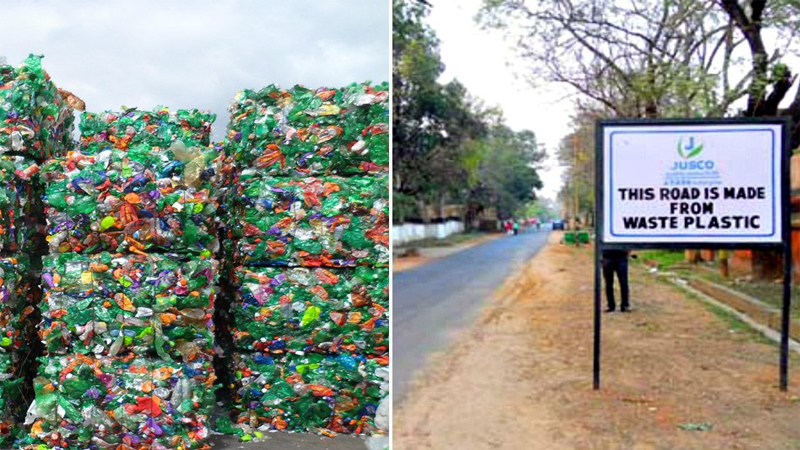SOLAR FARMS: A NEED TO SHIFT TOWARDS A RENEWABLE ENERGY
Nowadays, challenges such as limitation of
fossil fuels, environmental pollution, importance of energy-mix diversiï¬cation,
and possibility of earning more value from fossil resources have encouraged
governments all over the world to promote the renewable energy share in their
energy portfolios. Solar energy is one of the best and most economical types of
renewable energies in India. It will not only lead to a reduction in most of
the human concern such as environmental pollution, new emerging diseases and termination
of fossil resources, but also considering India’s climatic conditions, it can
be well developed in India. Generally, Concentrating Solar thermal Power (CSP)
and photovoltaics (PV) are the two major technologies for exploiting solar
energy. In recent years, the utilization of solar energy systems is developing
because of its simplicity, easy transport, high reliability, absence of
mechanical parts, compatibility with the environment as well as no need for
fuel.
India, with its large population and
rapidly growing economy, needs access to clean, cheap and reliable sources of
energy. India lies in the high solar insolation region, endowed with huge solar
energy potential with most of the country having about 300 days of sunshine per
year with annual mean daily global solar radiation in the range of 4 - 6
kWh/m2/day. Solar power projects can be set up anywhere in the country.
Identifying suitable locations for the construction of solar farms, as with any
other engineering project, requires detailed information and accurate planning.
In the process of exploiting solar energy, alongside the necessity of existence
of solar insolation potential in the region, the vital point is investigating
different places considering various technical, socio economic, and
environmental criteria. Geographic Information System (GIS) is considered as a
very useful and practical tool capable of developing a database which can act
as the departure point for guiding any decision support system (DSS).
The study was done for identifying
suitable land parcels in Nagpur District for exploitation of Solar farms
by Land Suitability Analysis in GIS (Geographic Information System) using
Weighted Overlay method for more accurate location of site, planning and
decision making using the different parameters like Solar radiations,
temperature, Cloud cover, distance from major roads, Land Cover map (Built up
area, wasteland, water bodies, vegetation, forest), humidity, slope and
elevation of study area. Once the data was collected the maps were generated
according to criteria selected for study like Solar radiation, temperature,
Cloud cover, Humidity will prepared using IDW tool, Slope tool and Land Utilization
and Land Cover map were prepared using Maximum Likelihood Supervised
Classification tool. Then all maps were reclassified using reclassify tool and
suitability number were assigned to each map from 1 to 5 (1 for Poor and 5 for
Excellent). Next, by overlaying these criteria layers, the ï¬nal map of
suitability of Nagpur District for
exploiting solar PV plants was generated using Weighted Overlay tool by
assigning weights to each criteria and using evaluation scale of 1 to 5 and the
inferences were made from final map of the ï¬ve deï¬ned classes of excellent,
good, fair, low, and poor level and area was calculated of each classes. Using this criterion, the weighted overlay analysis
was done on basis of five defined classes and results are interpreted that
0.02%, 24.68%, 53.50%, 21.55% and 0.22% comes under Poor, Low, Fair, Good and
excellent category for constructing the solar farms. Using this results the
most suitable (excellent) and
suitable(good) land was separated and seven zones were identified using the
factor like waste land and easy accessibility from major roads. The area under
this zone were 433.05 Sq.km and capacity of these zones to produce the
electricity using solar energy was calculated approximately as 32.5 GW (5 acres
of land produce 1 MW of electricity). But if 30% of land is used to construct
the solar farm then it can produce 6.67 GW (refer table 13) of electricity and
is surplus of electricity required for Nagpur District that is 3.847 GW. Also,
the water bodies were given weightage for constructing solar farm as now a days
the new technology has evolved of constructing floating solar farms. The main advantage of
floating PV plants is that they do not take up any land, except the limited
surfaces necessary for electric cabinet and grid connections. Their price is
comparable high with land based plants, but they provide a good way to
avoid land consumption. Floating PV plants are
more compact than land-based plants, their management is simpler and their
construction and decommissioning straightforward. The main point is that no
fixed structures exist like the foundations used for a land-based plant so
their installation can be totally reversible.
The Public Private
Partnerships (PPPs) are a mechanism for facilitating private sector
participation in the delivery of RE infrastructure projects. PPPs can mobilize private sector capital,
technological and operational know-how, and risk appetite to develop, design, finance,
build, operate and maintain a RE infrastructure project. The state government
need to focus on conducting such GIS studies for identifying suitable land
parcels for constructing solar farms and provide such renewable energy
infrastructure in partnership with private entities for development and
management of solar park using design, build, finance, operate and maintain Public
Private Partnership model. Also there should be link between the study and
policy mechanism by government for implementation of solar farms as Development
of Solar Parks and Ultra Mega Solar Power Projects in India, MNRE as a flagship
demonstration facility to encourage project developers and investors, prompting
additional projects of similar nature, triggering economies of scale for
cost-reductions, technical improvements and achieving large scale reductions in
GHG emissions. It would enable States to
bring in significant investment from project developers, meet its Solar
Renewable Purchase Obligation (RPO) mandate and provide employment
opportunities to local population. The State will also reduce its carbon
footprint by avoiding emissions equivalent to the solar park’s installed
capacity and generation. Further, the State will also avoid procuring expensive
fossil fuels to power conventional power plants.
Recently a Billionaire Gautam Adani’s
renewable firm Adani Green Energy won a
world’s largest solar order to build 8GW of photovoltaic plant worth Rs. 45,000
Crore from Solar Energy Corporation of India (SECI). This project will help
India to achieve its COP21 target of reducing carbon emission as it will
displace 900 million tonnes of carbon dioxide over its lifetimes and he also
said that this is another step in India’s Climate change promise to the world
as well as making and enabling India’s Atmanirbhar Bharat Abhiyan (self-reliant
programme) and achieve this great fit by shifting towards a renewable source of
energy. This project will also make 4 lakh employment
opportunities and will contribute to revive India’s green economy. The
purpose of the study is also to make aware that such land parcels can be
identified using GIS studies for exploiting solar parks/farms with accurate
location and planning and shift from non-renewable source to renewable source
of energy so that carbon emissions and environmental pollution can be reduced.
There is need that Government should carry out such GIS studies and provide
such sustainable/green infrastructure in partnership with private entities that
is PPPs. This would help India to be completely renewable rather than be a non-renewable
and adopt such green field projects.
Together We Will Grow, Together We Will Build
Related Articles

Plastic Roads: Use of Waste Plastic in Construction of Roads

TOWN AND COUNTRY PLANNING ACTS- A CRITICAL ANALYSIS OF THE HARYANA DEVELOPMENT AND REGULATION OF URBAN AREAS ACT, 1975

Intelligent Energy System for Sustainable Use

Active Mobility in Kochi




